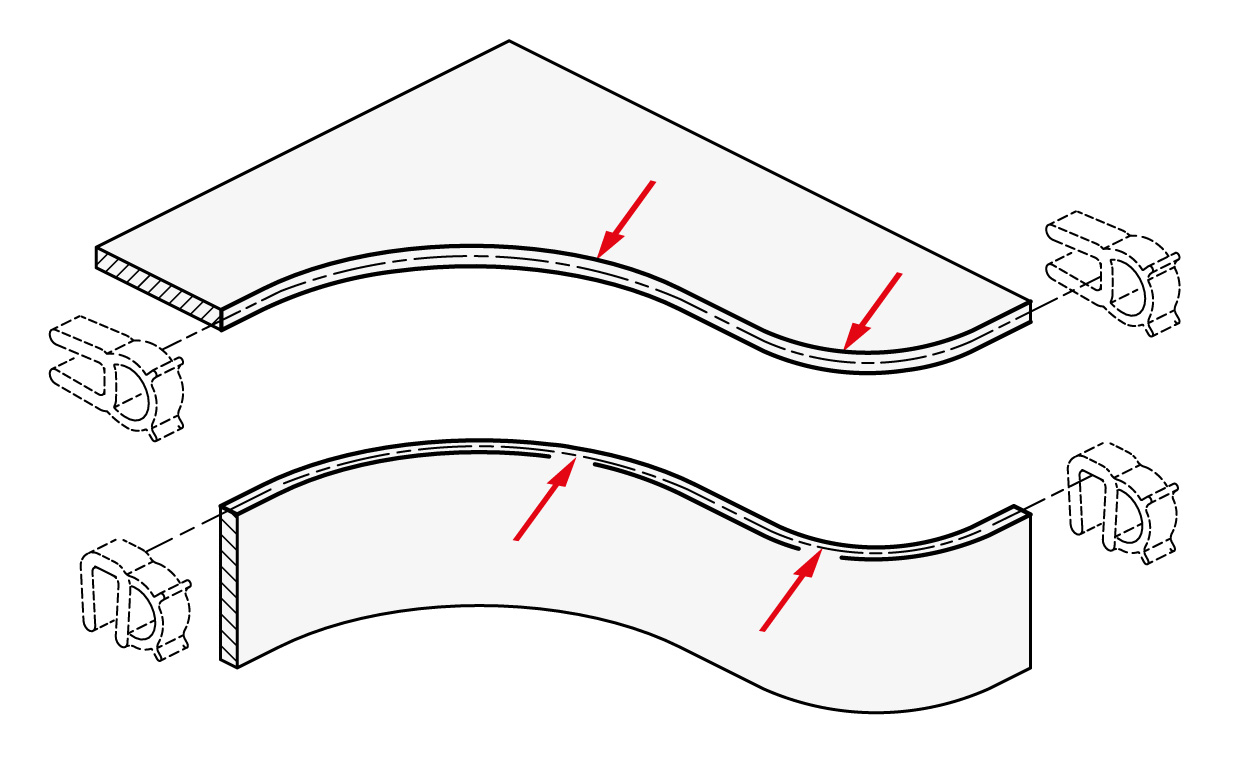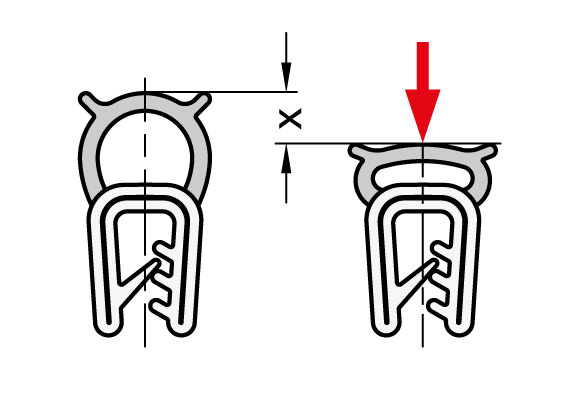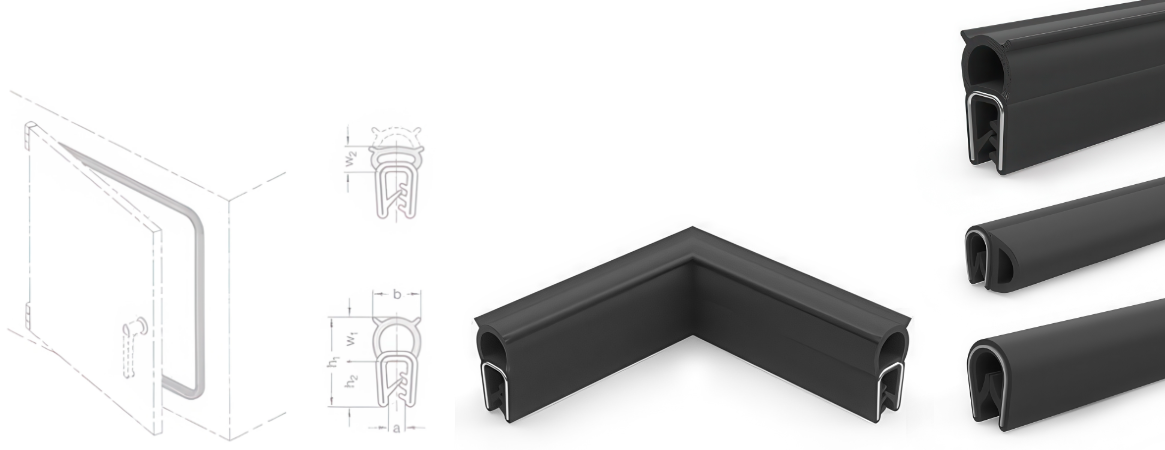Uses and applications
Edge protection profiles minimize the risk of cuts and abrasions when handling machines and equipment parts made of sheet metal. In these applications, the decorative appearance of the protectors is a positive side effect. Another use is cable and hose guides that run through and across holes and edges of sheet metal partitions. They reliably protect against scraped or rubbed cables and hoses.
In general, using edge protection profiles can reduce the need for further treatment such as burring and chamfering of cut or laser-cut metal sheets.
Edge protection seal profiles have the same advantages as regular edge protectors, but they are primarily used when doors, covers and hatches need additional sealing to prevent dust, hot air and noise from escaping, or splash water from entering.
Structure
Edge protection profiles consist of an extruded clamping profile which forms the base of the structure and is used on the edge of sheet metal in order to affix the edge protection profile.
The clamping profile is reinforced to increase its clamping force. This keeps the profile from coming off by itself after it is installed.
The clamping insert is available as a steel clamping strip or as a steel wire polyester clamping band. Steel clamping bands have a higher clamping effect, while steel wire clamping bands allow a smaller assembly radius, also enabling a more even alignment of the edges.
The seal profile is mounted on the clamping profile from above or from the side and is much softer than the clamping profile. It can be made from the basic material of the clamping profile but it can also be made from particular materials for specific applications. In order to attain optimum sealing, the seal profile needs to be prestressed and/or formed to enable it to adapt precisely to the countersurface.
With edge protection seal profiles, the sealing lips inside the clamping profile provide the seal against the sheet metal edge.

Installation
Side cutters and scissors that are suitable for cutting the metal clamping insert can be used to align the profiles. Any end parts of the clamping insert that protrude from the cutting area should be removed in order to prevent injuries. The profile ends and cants can be subsequently sealed and/or glued as required.
The mounting of the profiles to the edges is secured via the clamping insert. Glue or other adhesives are not usually required.
Profiles can generally be assembled by applying pressure by hand. If necessary, the profile can additionally be secured by lightly applying a soft-face hammer.
Minimum placement radii
In order to ensure a consistent seal for the profile and to prevent the profile from detaching, placement should not be set below the minimum radii. This also makes the profile assembly easier.
The radii are listed on the corresponding standard sheets and should be used as a guideline. Depending on the direction of application, a distinction is made between cut or curved radii, in other words, interior or exterior seal profiles.

Shaping
Ideally, edge protection seal profiles should maintain a deformation x of approximately 30 - 50% of the maximum value in order to ensure a reliable sealing.
Deformation of over 50% can impair seal tightness and reduce the resilience of the sealing material due to plastic deformation.

Basic materials, characteristics
Profiles can be made from various basic materials depending on the application. The following table offers a few general properties to simplify initial selection.
Given the numerous chemicals, solvents, etc., precise information cannot be offered since materials with low resistance to a general class of substances may have high resistance to particular substances and vice versa. The concentration, temperature and length of exposure also has a major influence. Customers should perform resistance tests with relevant materials.
| Properties | PVC | NBR | EPDM |
| Operating temperature min. | -40 °C | -30 °C | -40 °C |
| Operating temperature max. | +70 °C | +100 °C | +100 °C |
| Abrasion / wear resistance | + | + | + |
| Deformation resistance | o | + | + |
| Resistance to: * | |||
| UV light / weathering | + | - | + |
| Chemicals | + | - | + |
| Oils, greases | o | + | - |
| Fuels | o | + | - |
| Acids | + | o | + |
| Alkaline solutions | o | + | + |
| Solvents | o | o | o |
| Alcohol | o | o | + |
* + resistant, o conditionally resistant, – non-resistant
UL certification (Seal profiles as EPDM)
Underwriters Laboratories is an independent, international company in the field of safety engineering similar to the TÜV in Germany. Their testing / certification is required as a priority in the US market.
Edge protection seal profiles GN 2180 made of EPDM have a “UL-recognized component” mark. This states that the profiles can be used as components in finished products which are also intended for UL-certified use.
Such certification is becoming increasingly important to customers and companies since it guarantees maximum quality, reliable processing, durability and dependable safety of the products.

